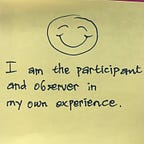My name is Constraints. People roll their eyes at me — except Sofia. Like most people, she is already tested by my distant cousins: Adversity, Injustice and Misfortunes. Still, Sofia insists that she needs me. I ask her to explain why in exactly 800 words. Below is her response.
Dear Constraints,
I need you because my friendships with Happiness, Sustainability and Creativity won’t be complete without you.
Happiness
Human beings are inherently constrained by time. One may breathe today but not tomorrow. Some wish there are more hours in a day so they can work more. Or there are more days in a weekend so they can work less. Either way, there is no guarantee that they would be content were their wish granted. Working and resting within the constraint of time have a better chance of bringing happiness than trying to dismantle the time constraint itself, especially when one has limited time on earth.
Human beings are also inherently constrained by their physical and cognitive limitations. Without a set amount of nutrition, sleep, sunlight, exercise, and social interactions, one can’t live a healthy and happy life. Human brains are susceptible to the paralysis of options, hence decision fatigue. In The Paradox of Choice, psychologist Barry Schwartz argues, “Choice has made us not freer but more paralyzed, not happier but more dissatisfied.” Avoiding the paralysis of options is why parents give their toddlers drink options of milk or apple juice; why Barack Obama wears a blue or gray suit; and why executive typically discuss no more than three alternatives in board rooms.
Since life is inherently constrained, to deny constraints is to live in denials. Sequentially, to live in denials is to deny true happiness. Famous philosopher and sociologist Émile Durkheim wrote, “Unlimited desires are insatiable by definition and insatiability is rightly considered a sign of morbidity. Being unlimited, they constantly and infinitely surpass the means at their command; they cannot be quenched.” Without constraints, one may lose his mind.
Sustainability
Life relies on balance: in supply and demand, in creation and consumption, in progress and tradition. Having just-right amount of each side sustains life. Just-enough heat sustains life; the wrong amount kills it. Just-enough entertainment inspires a child; the wrong amount destroys her. Just-enough culture amalgamation bears relevance; the wrong amount bears extinction. The wisdom to discern just-enough amount comes from experiencing both sides of the scale. (Un)fortunately, not everyone gets to experience both sides. Adding constraints is the only way sustain balance: hence life.
Adding constraints to accomplish sustainability is scarcely about watching a crunchy-granola man preach on his soapbox. Lawmakers enact debate time limits; companies impose target revenues and costs; and hospitals enforce staff-to-patient ratios — all so that they can function properly long term. The beauty comes when these constraints intertwine themselves and accomplish more than one purpose — like green coding. When software is written such that its algorithms minimize burdens on the overall physical servers and networks in its ecosystem, it sustains the planet, the wallet, and the mind all at the same time.
Since life relies on balance, to ignore constraints from each side of the scale is to live in short-lived success. The path to permanence requires a cost to everything. When the cost isn’t immediately visible from one’s vantage point, the right thing to do is to ask who’s possibly paying for it. Then act accordingly.
Creativity
Constraints induce creativity that’s often impossible otherwise. This phenomenon goes beyond a child panic-practicing before her violin lesson. Author Neil Gaiman writes as if he were paying by the word; Dr. Seuss used 50 English words in Green Eggs and Ham. Chef Rachael Ray cooks 30-minute meals. Apple’s “Simplicity is the ultimate sophistication,” is its design manifesto in 5 words. A Harvard Business Review article even suggests, “Rather than providing ample resources and freedom to your innovation teams, try doing the opposite: cutting your budget, imposing a tighter deadline, or setting more challenging performance criteria.”
Using constraints as a forcing function for creativity must indeed be thoughtfully crafted and centered on its eventual audience. Few tolerate incomprehensible books, inedible food, or exorbitant gadgets. Gaiman asked himself why his readers should care when choosing his words. Dr. Seuss focused on first-graders vocabulary in his word choice. Steve Jobs enforced the 3-click test on the iPod design; Jonathan Ive stated wisely, “Simplicity isn’t just a visual style or the absence of clutter. It involves digging through the depth of the complexity. You have to deeply understand the essence of a product [to] be able to get rid of the parts that are not essential.” Simple is not easy.
Creativity-inducing constraints may be a luxury — until creativity becomes a necessity. Pfizer, BioTech and Moderna released COVID-19 vaccine in 8 months; six Boeing engineers revised the B-52 bomber specifications from propeller to jet engines in 4 days; GE Healthcare India invented a $700-portable electrocardiogram that cost patients $1 per scan — not because they could, but because they must. Until one can magically wake up in the morning with creative brain muscles grown overnight, creativity-inducing constraints are necessary.
Love,
σοφία
